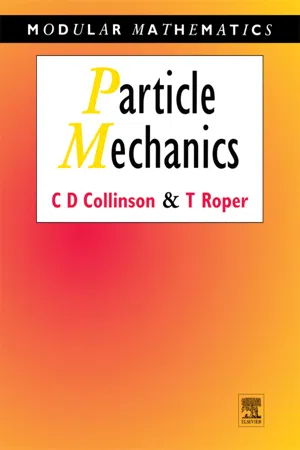1.1 General Discussion
What is mathematics? Perhaps one way to answer this question, or to side step it – depending on your point of view – is to say that mathematics is what mathematicians do. If you were to investigate the interests of a hundred mathematicians employed in industry, in the public services and in academic institutions, you would quickly become aware of a very wide spread of interests. Some, for example, would be interested in mathematical structures for their own sake, striving to generalize existing structures, forging links between seemingly disparate structures and deepening understanding whenever possible; they would be called pure mathematicians. Others would be interested in analysing data, designing experiments, devising methods for the quality control of industrial processes; they would be called statisticians. Still others would be interested in using mathematical structures to describe and enhance their understanding of the world about us; they would be called applied mathematicians. In fact the distinction between these three areas of interest is far from clear cut and to use them to categorise mathematicians is often less than helpful. The applied mathematician searching for mathematical structures with which to describe some specific phenomena often motivates the discovery of new mathematical structures or the reinterpretation of existing ones. The pure mathematician who uses algebraic structures to describe and investigate geometrical results, for example by the use of cartesian coordinates, is engaged in much the same activity as the applied mathematician.
The use of mathematical structures to describe and so enhance understanding of specific aspects of the world about us is called mathematical modelling. The mathematical structures used are said to constitute a mathematical model of the phenomena being described. The choice of mathematical model will depend on our experience of the phenomena, experience which can be gained from the results of experiment, the analysis of observations, conjectures and previously established mathematical models of similar phenomena. Mathematical modelling plays a central role in many disciplines, for example in physics, chemistry, the biological sciences, economics, geography and the social sciences. The difference between the arts and the sciences is that science is concerned with just those phenomena which can be modelled mathematically. The chemist who performs an experiment to find a reaction between substances, models the observed reaction as a symbolic equation. The biologist models birth and death processes as differential equations. The manager models the activities of different sections of a business by means of weighting factors which are then used in the formulae constructed to determine the allocation of resources to those sections. The engineer models the relationship between the tensions and thrusts in the struts of a bridge as a system of algebraic equations.
Having formulated a mathematical model of some observed phenomena it is possible to manipulate the mathematics and to interpret the results of the manipulation in order to predict the occurrence of some new phenomena. It is this element of prediction which excites the interest of the academic and which is of practical use to society. If the predictions are found to occur in reality then the mathematical model is validated, that is it is found to be satisfactory. However once a prediction fails to agree with reality the mathematical model is shown to be incomplete and must be replaced by a more refined model. No mathematical model can ever be accepted as being perfect. When a mathematical model has been validated by testing its predictions against reality, those predictions themselves extend the original observations on which the mathematical model was based and thus might suggest possible modifications to the model. As experimental and observational techniques improve, the accuracy of the information obtained increases and this again might suggest refinements to an existing mathematical model. The important point to bear in mind from this discussion is that the process is never ending; existing mathematical models will be superseded, eventually, by more sophisticated ones. Nevertheless it is also important to understand th...
